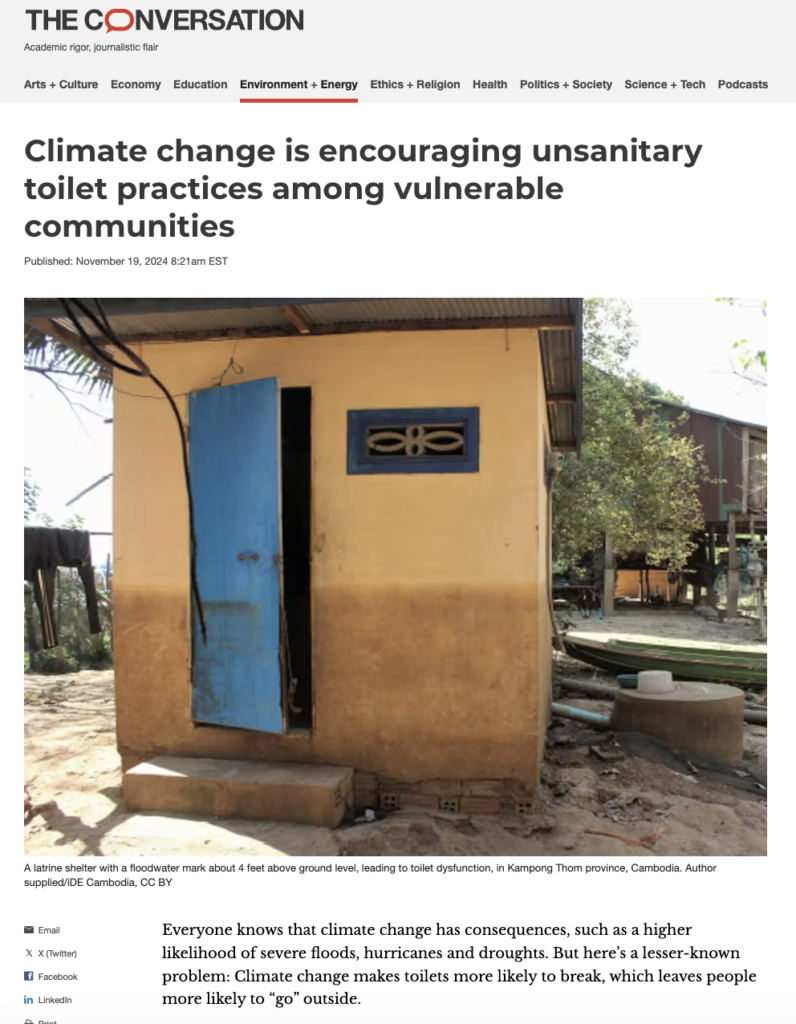By James Harper – Assistant Teaching Professor of Engineering Design, University of Colorado Boulder
Everyone knows that climate change has consequences, such as a higher likelihood of severe floods, hurricanes and droughts. But here’s a lesser-known problem: Climate change makes toilets more likely to break, which leaves people more likely to “go” outside.
That’s what colleagues and I found when we studied households across six rural Cambodian provinces, focusing on their access to proper toilets and when people decide to abandon sanitary systems in favor of open defecation, or “going” outside.
We analyzed sanitation behavior surveys that were given to about 200,000 households every two years from 2013 to 2020. These questionnaires looked into how households maintained access to sanitary toilet systems, when these facilities were abandoned, and why. It also inquired about the poverty status of the households.
A second survey of 1,472 households that owned a pour-flush latrine purchased through local sanitation businesses supported by the nonprofit organization iDE looked at how well these toilets functioned, as well as attitudes toward waste management. In this case, waste management refers to how often and when latrine pits are emptied and whether the waste is contained in a safe and hygienic way.
Our goal was to establish how living in regions vulnerable to the effects of climate change affects how well sanitary toilets function, and the impact that has on households’ sanitation practices and perceptions.
The key result of our study, which was published in the peer-reviewed journal Environment, Development and Sustainability, was clear: In regions where climate change makes heavy storms and floods more common, households more frequently stop using and maintaining their toilets.
Toilet dysfunction, which temporarily prevents a toilet from flushing or from keeping human waste from entering the environment, is more frequent among households living in flood-prone regions during the rainy season. We found that for every point increase in the composite climate vulnerability index, toilet abandonment went up by 4%.
Unsurprisingly, we found that the poorest households were hit hardest. For every percentage point increase in the number of households living in poverty for any one district, toilet abandonment went up by 1.2%.
Why it matters
Going to the toilet is a basic human necessity, yet more than half the world’s population uses toilets that do not treat human waste before it reenters the environment, typically into rivers.
Moreover, a 2021 report by the World Health Organization and UNICEF found that about 673 million people have no toilets at all and are forced to defecate out in the open.
This is a huge source of pollution and a major risk to human health. Poor sanitation also drastically increases the burden on water treatment systems.
…



